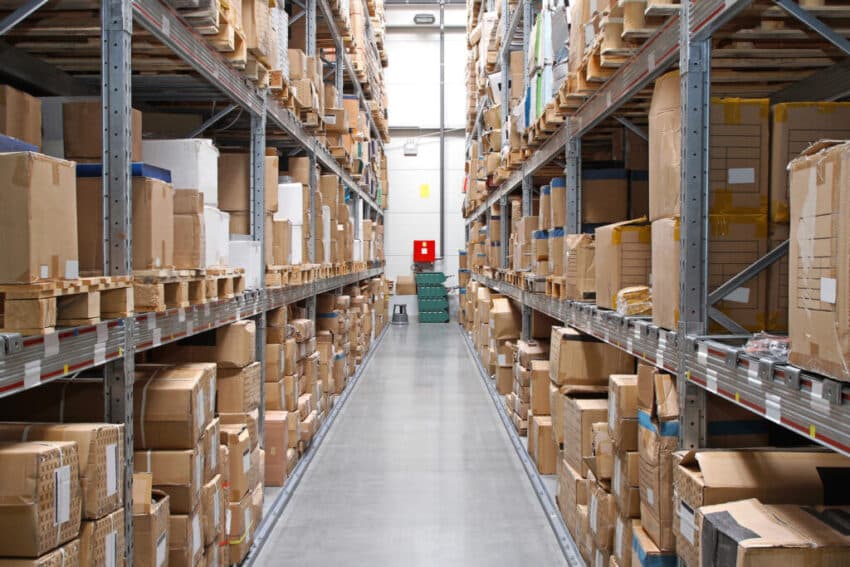Warehouse management is important for companies. It is a critical part of meeting the company’s objectives.
A good warehousing system ensures better inventory management and increased capacity and productivity.
Even or standardized products are easier to store in a warehouse. But how about long and heavy materials or goods? Examples of these are construction materials like tubes and pipes.
For such materials, we will be giving a guide on possible racking solutions. Below is a list of steel pipe storage rack you can choose from:
Static Cantilever
This racking system is a popular choice because of its versatility and practicality. It can be used for both indoor and outdoor racking. Cantilever racks offer good storage density and accessibility. Another reason for choosing cantilever is safety.
Accessibility is an advantage of a cantilever. You can load or unload materials using forklifts, stackers, hoists, or even simply by hand.
With a cantilever system, place your materials on the rack to utilize the vertical space. You might need a forklift to get the items. Cantilever saves spaces as you can build up instead of floor or yard stacking.
Moreover, cantilever racks can carry heavy loads. These racks are considered to be a safe method for storing, loading, and unloading. As long as the racks are installed and used right, it is safe. However, it is best to regularly still inspect it.
In terms of costs, the cantilever is also an economical choice. The price per rack is a few hundred dollars to several thousand. Cost is dependent on various factors like height, length, and capacity. Cost also depends if you have to customize the rack according to specifications.
Lastly, a cantilever rack is durable and iis a good steel pipe storage rack. Even in outdoor use, cantilever racks can last for many years. Overall, cantilever racks are a good choice. They are durable, versatile, accessible, and practical.
Crank-out Cantilever
Crank-out is like the static cantilever. It is almost the same when it comes to design and accessibility. However, what makes it different is that it offers more storage density for those long and heavy materials.
What crank-our racks do is to pull back the load into the rack. This allows a tighter storage for long items like tubes and pipes. If you place the racks beside fabrication machinery, it can reduce machine time. It can also maximize the space better.
When it comes to accessibility, crank-out racks allow full access to all the items anytime. This is possible through the use of the hand for lighter materials and by hoist for heavy ones.
In terms of safety, crank-out racks have limited chances of spills or drops. The reason for this is because it retracts the load into the rack. Crank-out racks also help workers as the movement becomes more ergonomic. Thus, it is less exhausting. This racking system also has safety features, which makes it less prone to injuries.
Because of the additional features and advantage of crank-out racks, these are more expensive. These racks are usually seen in high-density applications. In these situations, the cost is not so much of an issue. Space utilization is more important. Fast access to the stored long and heavy items is very critical in certain businesses. Hence, the higher cost of using crank-out racks versus static cantilever is justified.
Stackable
Another storage option for long and heavy materials are stackable racks. Stacking racks are not permanently installed into the concrete. This is the main difference versus cantilever racks, which are more permanent in structure.
Because of this, stackable racks offer flexibility. It is good to use in situations where you might need to move inventory quickly. For different situations, you can easily adapt with a stackable racking system.
Another advantage of stackable racks is that it has a good storage capacity. One rack can carry between 2,500 to 7,500 pounds. It means you can put in long and heavy loads. You can even improve support by adding more stacking racks.
Stackable racks also offer good density. These racks can reach 4 to 6 layers in height. Some can reach up to 10. But, this type require aisles. You cannot stack them as high as you can with a cantilever rack. Although, it is still higher than ground-stacking systems.
One drawback of stackable racks is the fewer options for loading or unloading. Access for many stackable racks are from the ends only. This is because the layer above prevents a forklift to pull up a load. It is even more difficult to unload for mixed stock.
For costs, stackable racks are cheaper than the cantilever ones. Although, you need to buy more racks if you need to stack longer and heavier loads.
Floor and Ground
With floor and ground stacking, tubes, pipes, and steel are put on the floor in between structures. This prevents sliding or rolling. Floor storage is used for bundles or items that are near the processing machinery.
For this storage type, you cannot stack items high enough or use much of the vertical space. It also consumes a lot of floor space that may be useful for something else. For mixed type inventory, you cannot stack them on top of each other on the floor. You cannot access each of them without the risk of falling. Storage using floor also poses safety and risk factors.
Although floor storage is free, you still need a very big floor to hold the items. You may also need to still spend to buy markers, pillars, or poles to separate the items on the floor. Alternatively, you could look into external floor storage solutions to help maximise your existing warehouse space.
Remember, choosing the right steel pipe storage rack is a critical step in warehousing. Study carefully your business needs and objectives to get the best solution.


